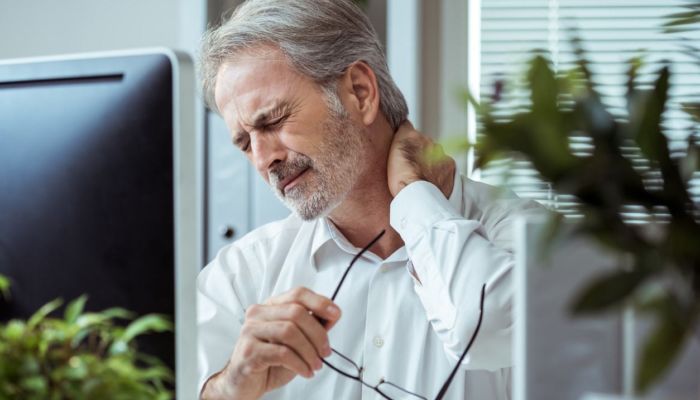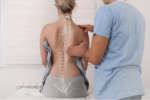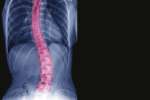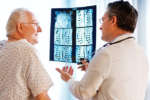As we age, the cumulative years of use can take a toll on our bodies. Sometimes, that can manifest itself in pain. When the spine is involved, the pain can be great and can affect simple activities like walking. Spinal stenosis is a condition that usually develops in people age 50+, and it can literally be a real pain in the neck and back. Fortunately, there are treatment options that can provide relief from these growing pains.
What Is Spinal Stenosis?
The word stenosis means narrowing, so spinal stenosis is a medical term describing the narrowing of the spaces within the spine. It can occur anywhere along the spine and is, most commonly, the result of aging. Other contributing factors include the thickening of ligaments and joints in the spine, bulging discs, or an instability in the spine that causes shifting.
Any narrowing causes the root of the nerves to be compressed which can result in feelings of numbness, radiating pain, and muscle weakness in the area of the body served by that compressed nerve. Lumbar stenosis, in which the nerve roots in the lower part of the spine become compressed, is the most common type and often causes tingling, numbness, or shooting pain from the lower back or buttocks into the leg. These sensations tend to worsen with activity, including standing or walking for extended periods, and are relieved while sitting or bending over to relieve the pressure. While lumbar spinal stenosis starts in the lower spine, stenosis is not limited to the lower spine and the narrowing can occur in parts of the spine, even in the same patient.
Cervical stenosis is diagnosed when the narrowing occurs in the neck, and may indicate compression of the spinal cord. Symptoms of cervical spinal stenosis include numbness, tingling, or weakness that is typically felt in the arms or hands but can happen in the feet and legs as well. It may also cause lack of balance, neck pain, and even bowel or bladder dysfunction. Stenosis is often diagnosed with an MRI, and treatment depends on the severity of the narrowing and how that narrowing is affecting the spine. Compression of the spinal cord can lead to paralysis, so symptoms of stenosis should not be ignored.
Some people are born with a narrow spinal canal, but most people experience spinal stenosis because something else happens to cause the canal to narrow. One condition that can narrow the spine is osteoarthritis, which can cause wear and tear on the bones in the spine and may lead to bone spurs that grow into the spinal canal. A herniated disc may also cause tissue to push on the spinal cord or nerves. As we age, the ligaments and joints that hold the spinal bones together often become harder and thicker, which can put pressure the spinal canal. Other occurrences like an injury from an accident or other trauma can cause narrowing of the spinal canal because of tissue swelling or even pieces of bone that have been displaced.
What To Do About Spinal Stenosis
Treatment options for spinal stenosis range from lifestyle adjustments you can make at home to more serious treatment like surgery. Many people need a combination of therapies to help with symptom relief.
Initial treatments can include over-the-counter pain relievers, hot or cold compresses, and an adjustment in activities. Increasing certain types of exercise, like aerobic activities, specific stretches and other forms of exercise recommended by your doctor can help in a couple of ways—by improving overall flexibility, which can create space in the spinal canal and helping with weight loss, which will take pressure off the back. If you are overweight and are experiencing symptoms of spinal stenosis, weight loss alone can provide much relief and is a great place to start. It is important to not participate in any exercise program without talking with your NS2 physician. Physical therapy may also be recommended to help you learn some movements to improve your condition without exacerbating symptoms. NS2 has an in-house physical therapy department for both your convenience and to allow your doctor and physical therapist to communicate as a team in your treatment.
If symptoms persist, your doctor will discuss with you other techniques for managing your pain. When the stenosis is significant, it can require surgery. Sometimes a decompression procedure is enough, which is a minimally-invasive procedure, done without anesthesia, where portions of the thickened ligaments are removed to provide more space in the spinal canal. More serious surgery may be necessary for patients with cervical spinal stenosis or whose symptoms haven’t responded to other treatments.
If you are experiencing pain in the back or neck and wondering if you are suffering from spinal stenosis, make an appointment with NewSouth NeuroSpine today. We can help by assessing your symptoms, providing a diagnosis, and developing a treatment plan, including spinal intervention, physical therapy, and surgery if necessary.






